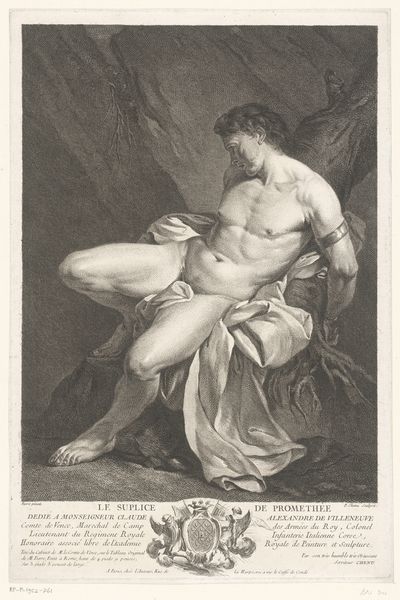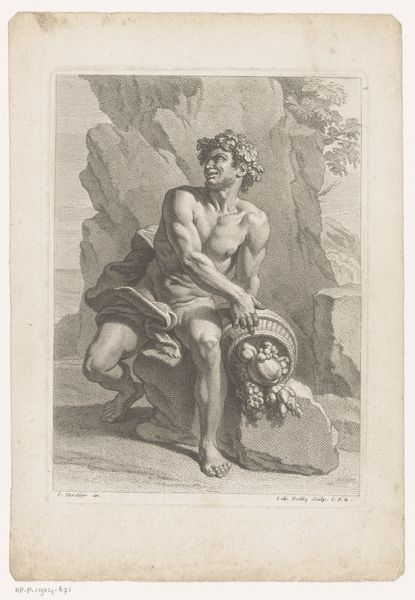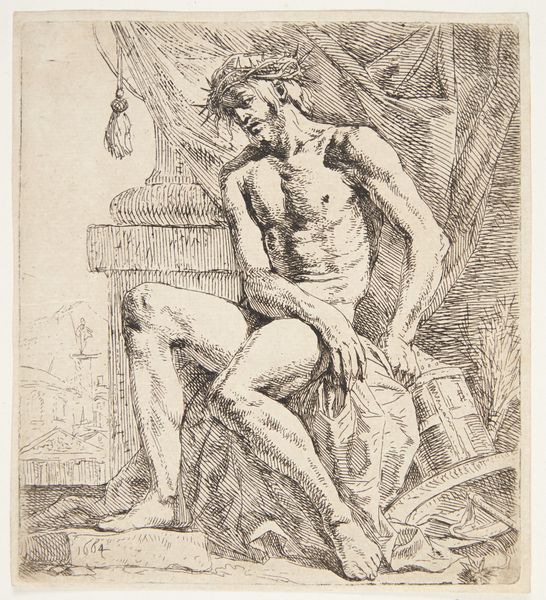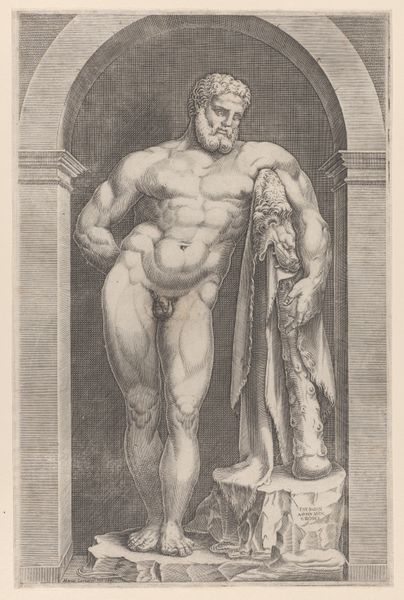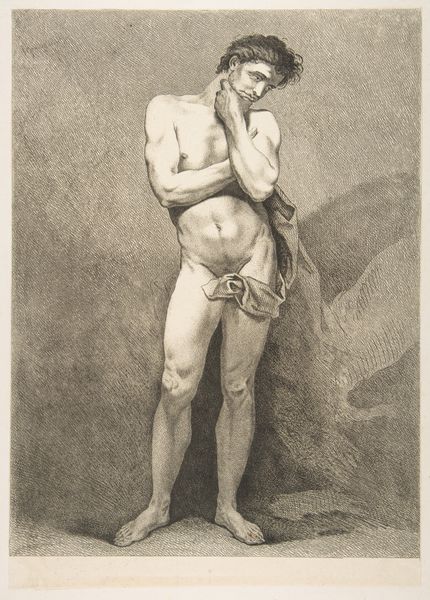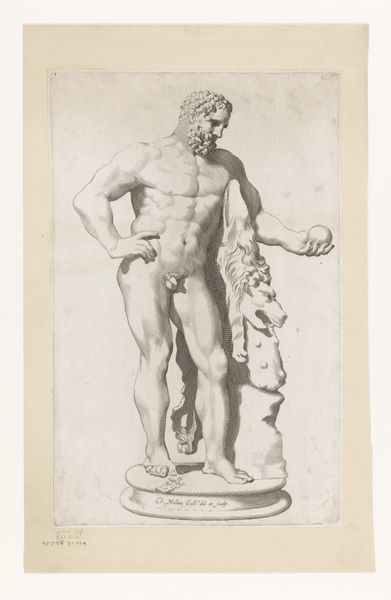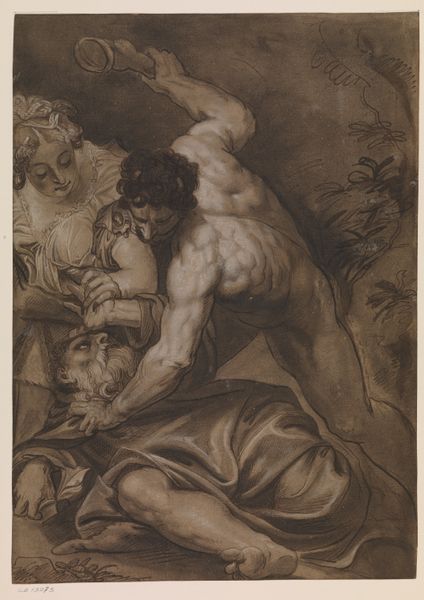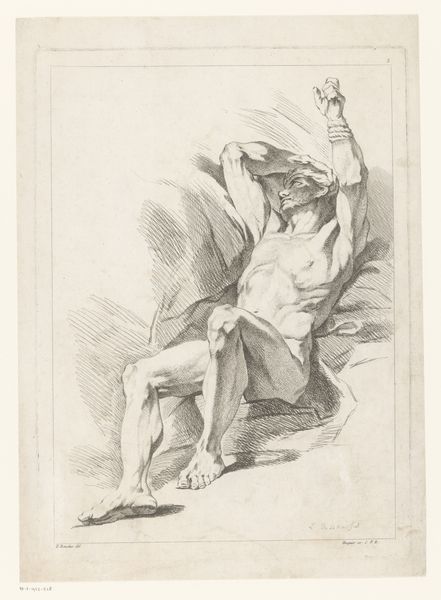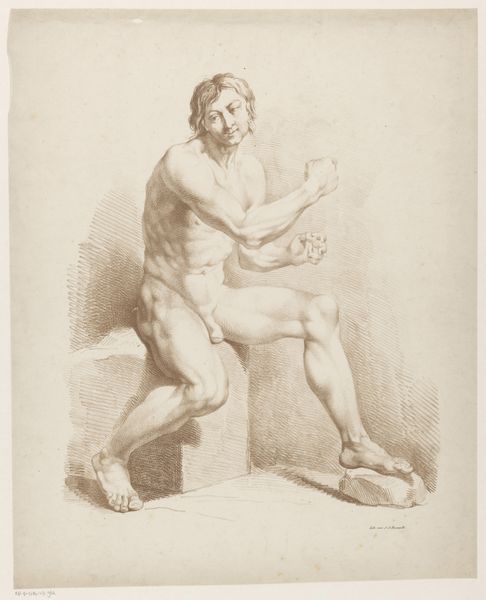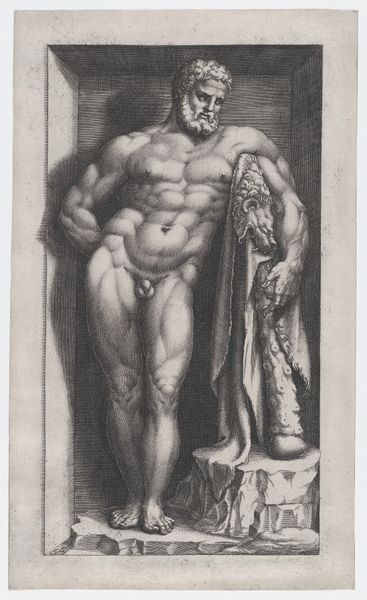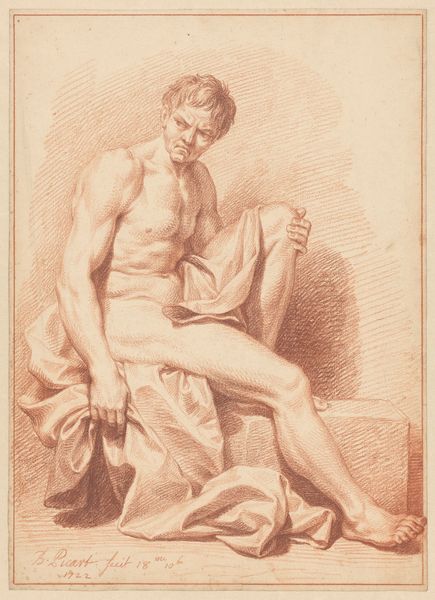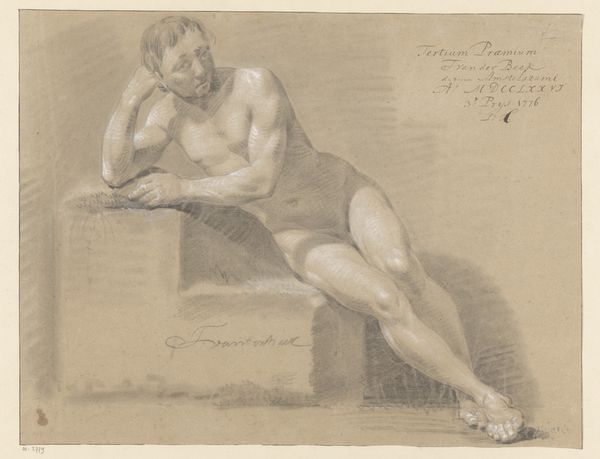
#
portrait
#
neoclacissism
# print
#
figuration
#
history-painting
#
male-nude
Dimensions: 380 mm (height) x 296 mm (width) (plademaal)
Editor: We're looking at "Cato," a print made in 1814 by Wilhelm Heuer, housed here at the SMK. It strikes me as incredibly dramatic. The stark contrast of light and shadow and the figure's intense gaze—how do you read the visual elements in this print? Curator: Let's consider the composition. The diagonal line created by Cato's body guides our eye upwards towards his face, drawing attention to his emotional state. The artist uses hatching and cross-hatching, observe closely the varied tones that add depth and volume to the figure's musculature. What about the interplay between light and shadow? Editor: It’s used to great effect. The light source seems to be above, highlighting Cato’s face, chest and hand on the knife while plunging everything else into deep shadow. This is print after all, the values seems intentionally chosen. It also adds to that dramatic effect I mentioned. Curator: Precisely. Now, think about the visual language associated with Neoclassicism. Do you see elements in this work? Editor: Yes, in the figure's idealized physique. The artist has rendered Cato as a strong man; this is an era drawing inspiration from Classical Antiquity, especially Greece, which prioritized harmony and clarity. This contrasts starkly with the violent scene unfolding, creating visual tension, no? Curator: Indeed. Heuer effectively juxtaposes these elements, which draws us into a psychological intensity. It's as if he's distilling a grand historical narrative into this moment of inner turmoil using visual vocabulary alone. Considering only what can be seen in this print, do you think he would rather not be doing this? Editor: This print makes you think, doesn't it? Considering only what can be seen makes the experience different, without context it is truly compelling. I definitely appreciate it in a new way. Curator: Focusing on its intrinsic elements does offer a powerful lens for experiencing this print, stripping away preconceptions and allows the materiality of line, form and light and the narrative figure create unique and subjective interpretations.
Comments
No comments
Be the first to comment and join the conversation on the ultimate creative platform.

